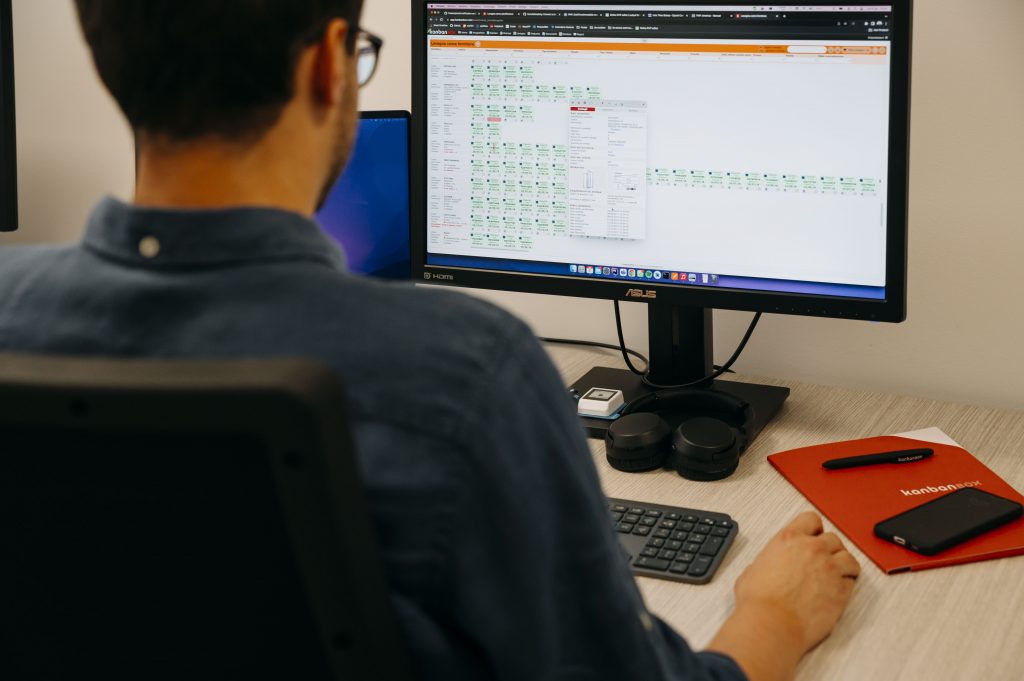How to Manage Production Spikes in a Kanban System
By Matteo Biagini
Three ways to handle Extra-Kanban Orders
The kanban system is designed to optimize the material flow, thus allowing you to level the production. However, it’ll happen you must face peak times, but there’s nothing to worry about.
In this article, we’ll explore how you can successfully deal with production spikes for products typically managed within your kanban system.
What is a spike?
A spike in demand is a time-bound period during which the orders you receive grow significantly. In our scenario, for a company with a kanban system in place, the increase concerns a finished product – or a component – typically managed with kanban.
Let’s examine a real-life example of a demand spike.
You’re a hydraulic valve manufacturer.
Thanks to a deep lean transformation program, you manage the valve components with kanban, and you succeeded in leveling the consumption and minimizing the stock level.
Now, for each type of component, you’ve got a kanban Loop in place. You know which is your production pace and can respect the Lead Time. Meeting deadlines is not a problem anymore.
Then, a new international customer changes your plans. They need an extraordinary cargo of valves as their historical supplier can’t meet the requirements, due to local supply chain issues.
You usually produce 1000 valves per day and have a minimum stock. To meet their demand, you should triple the production speed. This peak simply doesn’t fit the current kanban calculation for the valve components.
How to deal with the emergency? (Solutions below).
Apart from the example, the causes may vary depending on seasonality, trends, or special projects that you or your customers undertake.
Handling demand spike: 3 ways to do it
Taking care of demand spikes is important, especially if you follow the kanban logic. When facing a significant but temporary increase in production, it is important to adapt your kanban system so that, once the spike ends, you can easily return to the previous rhythm.
Let’s see which options you have.
1. Leveling the demand via Heijunka
Firstly, lean manufacturing suggests leveling the demand via Heijunka.
By collaborating and negotiating with the Salespeople and the Distributors, you can extend the new order over a longer period. So, you split the big order in smaller ones and address one order at a time. Smaller orders are easier to be leveled and this allows you to eliminate the spike. Now you’re back to a kanban system!
Going this way is not easy, anyway.
If the spike arises from a special project, or if your customer must meet deadlines, you might not have the time to level the production.
If going the lean way using Heijunka is impossible, you need to step up to the second option: changing your kanban sizing.
2. Sizing your Kanban for the spike time
In the scenario we set, you’re facing an increase in demand for products commonly managed via the kanban system. That is to say, you already have kanban cards for the valve components. However, they’re insufficient for the current need.
One solution is adding more cards to the component loops for the period of the spike. Once it is over, you’ll decrease the number of cards and return to your usual pace.
Unfortunately, the manual kanban makes this change really time consuming.
On the other hand, implementing this change is easier with e-Kanban software. In KanbanBOX, sizing kanban loops is quick and can be scheduled. For example, if you experience a +50% spike from the 4th of January (the order placement date) to January 18th (delivery deadline), you can adjust the number of cards of a specific loop from 10 to 15 in KanbanBOX. Then, you can schedule the downsizing back on January 18th.
Less manual work, less possibility of errors.
|
|
3. Managing Production Spikes with Synchro Cards
An unexpected peak occurs and the above solutions don’t work? Let’s use the Synchro Cards feature in KanbanBOX!
In a manual kanban, these cards are sometime called Spike Cards. In our e-kanban, you can mark the extra orders using a special card, called Synchro card.
Similar to kanban cards, Synchro cards can be added to the loop, and once the order is fulfilled, you mark the card as “released”. Then, the special card vanishes from the board without initiating a new order. Indeed, the consumption of items associated with a Synchro card doesn’t trigger an automatic replenishment order.
Standardize your processes in KanbanBOX
Thanks to this feature, you’ll standardize every order and its related activities. Be the orders normal kanban ones, or extra-kanban orders, operatives won’t see any difference and their operations won’t be impacted.
Discover what else you can do with KanbanBOX, book a call with us!
